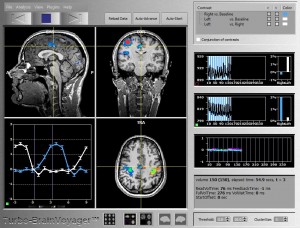What happens during the brain’s ‘resting state’?
September 20, 2012
Over the past few years, some researchers have been adding a bit of down time to their study protocols, Nature News reports. While subjects are still lying in the functional magnetic resonance imaging (fMRI) scanners, the researchers ask them to try to empty their minds. The aim is to find out what happens when the brain simply idles. And the answer is: quite a lot.
Some circuits must remain active; they control automatic functions such as breathing and heart rate. But much of the rest of the brain continues to chug away as the mind naturally wanders through grocery lists, rehashes conversations and just generally daydreams. This activity has been dubbed the resting state. And neuroscientists have seen evidence that the networks it engages look a lot like those that are active during tasks.
Resting-state activity is important, if the amount of energy devoted to it is any indication. Blood flow to the brain during rest is typically just 5–10% lower than during task-based experiments. And studying the brain at rest should help to show how the active brain works. Research on resting-state networks is helping to map the brain’s intrinsic connections by showing, for example, which areas of the brain prefer to talk to which other areas, and how those patterns might differ in disease.
But what is all this activity for? Ask neuroscientists — even those who study the resting state — and many will sigh or shrug. “We’re really at the very beginning. It’s mostly hypotheses,” says Amir Shmuel, a brain-imaging specialist at McGill University in Montreal, Canada. Resting activity might be keeping the brain’s connections running when they are not in use. Or it could be helping to prime the brain to respond to future stimuli, or to maintain relationships between areas that often work together to perform tasks. It may even consolidate memories or information absorbed during normal activity.
(more)
